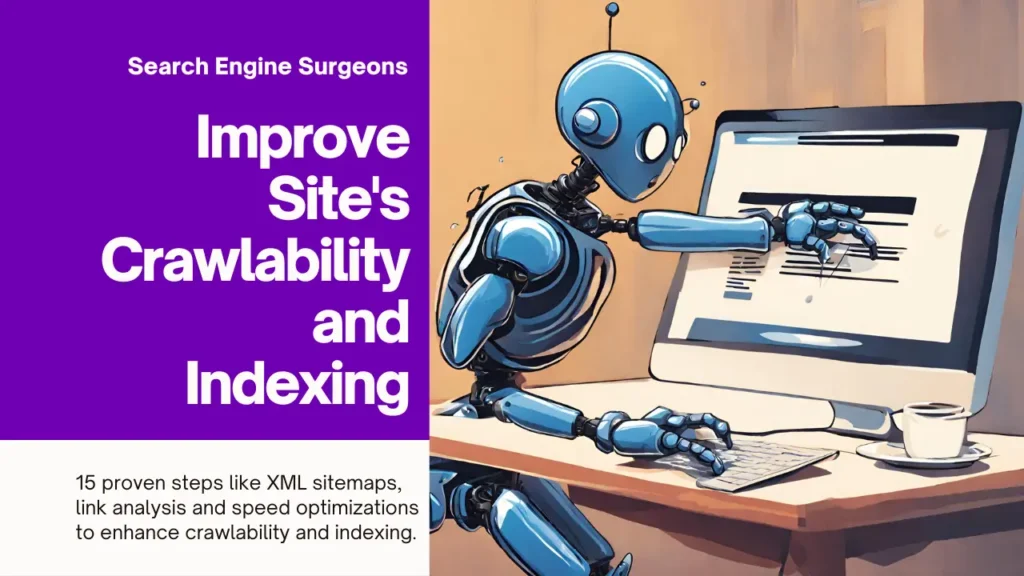Did you know optimizing just one overlooked element could boost your click-through rate by over 40%? According to a study of 1 million search results, pages with optimized meta descriptions saw 43.7% more clicks on average.
As someone who lives and dies by website traffic, you can’t afford not to take meta descriptions seriously. In this article, you’ll learn research-backed strategies for skyrocketing your click-through rates. Discover things like the one word Google looks for in every description (it’s not what you think!) and why using numbers works like magic.
You’ll also get real-world examples of descriptions that convert like crazy. So are you ready to boost traffic without extra work? Keep reading to uncover the clickbait-worthy secrets of meta descriptions.
Table of Contents
What are Meta Descriptions and Why are They Important?
Meta descriptions are the short summaries of your page content that search engines pull and display in search results. They give users a quick preview of what they can expect to find on your page without having to click through.
Most search engines, like Google, display the first 150 characters of the meta description under the page title on SERPs. This real estate is incredibly valuable for attracting clicks. Meta descriptions serve as a page’s “advertisement” to users and influence their impression of whether the page will satisfy their search intent.
So in summary, meta descriptions are snippets in search results that sell users on your page’s relevance before they even click. And as we’ll explore further, optimizing them correctly can go a long way towards boosting that all-important click-through rate.
Tips for Writing Meta Descriptions that Convert
Now that we’ve established how important meta descriptions are, let’s dive into some best practices for crafting ones that actually drive clicks.
Keep it Concise (145 Characters)
As the old saying goes, brevity is the soul of wit. And when it comes to meta descriptions, being brief is key. Google and other search engines typically display the first 145-160 characters of a description in SERPs.
So your goal should be conveying the most value to users within that limited real estate. Getting straight to the point without fluff will leave a stronger impression. As my friend Zain likes to say, “Don’t make ’em read, make ’em click!”
Include Your Target Keyword(s)
The number one factor search engines use to determine relevance is how well a page answers the user’s search query. By including the keyword or phrase people searched for, you reassure bots and humans alike that your page is on topic.
Subtly work the keyword naturalistically into the first 50 characters if possible, as that snippet often gets displayed on mobile. For example, a page about “SEO copywriting” may say: “Learn SEO copywriting tips to boost traffic and rankings.”
Clearly Articulate the Value Proposition
People don’t search hoping to be confused or waste time. They’re looking for a specific problem to be solved or question answered. Your description needs to address the “what’s in it for me” upfront to entice clicks.
For instance, instead of “Our guide to keyword research” say “Learn how to find low-competition keywords that will send traffic soaring.” The second connects immediate value to the reader’s self-interest.
Add a Strong Call-to-Action
Finishing on a strong call-to-action gives readers a reason to click through then and there. A simple “Learn more” or “Read our guide” isn’t compelling enough on its own.
Try “Discover our 9 best practices for boosting click-through rates by 47%” or “Get our free checklist for optimizing meta descriptions.” Specific, quantified CTAs perform much better than vague or generic ones.
Common Meta Description Mistakes to Avoid
We’ve covered some best practices, but optimizing meta descriptions is tricky – there are also plenty of pitfalls to sidestep.
Failing to Write Unique Descriptions
One of the quickest ways to annoy search engines is having duplicate or near-duplicate content, including in your meta descriptions. Even if the descriptions are accurate, bots can’t distinguish the value of each page if they’re all saying the same thing.
Google wants to show users novel summaries that help them decide which page best fits their needs. By ensuring each description is customized for its specific page, you solve this issue.
Overlooking Mobile Users
With over 50% of searches now coming from phones, you can’t ignore the mobile experience. But I’ve seen descriptions that are way too long for small screens. Remember, on mobile Google may only show one to two lines of your description.
Keep the first 50 characters or so as an extra concise “preview” that still makes sense if it’s all a user sees.
Leaving Out the Keyword
As we said earlier, keywords are crucial signals to bots about relevancy. Failing to include the user’s search term or a close variant is a missed opportunity. At best, it may cause your description to be overlooked. At worst, it could confuse searchers and lower your CTR.
Always double check your target keywords are reflected naturally in the description text. A little testing can prevent this easy-to-fix mistake.
Examples of Well-Optimized Meta Descriptions
So far we’ve covered best practices and pitfalls in the abstract, but examples often cement learning better than theory alone. In this section, I’ll share real meta descriptions from high-performing sites that exemplify the tips we discussed.
Example from Ahrefs:
“Website Traffic Checker. See search traffic estimates for any website or webpage. Try the free version of Ahrefs’ traffic checker.”

This utilizes many best practices – it’s concise, articulates clear value, and has a strong time-bound call-to-action. No wonder it drives so many trial signups!
Example from Moz:
“Backed by the largest community of SEOs on the planet, Moz builds the tools that make SEO, content marketing, market research, digital PR, and local SEO easy. Start your free 30-day trial today!”

Again, clear value proposition by addressing specific tools. The CTA “Start your free 30-day trial today!” is compelling without being wordy.
The proof is in the click-throughs. By modeling your own descriptions after proven templates like the above, you can drive similar performance gains.
Testing and Optimizing Your Meta Descriptions
Now that you’ve crafted some descriptions using the best practices, it’s time to put them to the test. Continuous testing and optimization is key to maximizing the impact of your meta descriptions over time.
A/B Testing with Google Search Console
Google Search Console allows you to easily run A/B tests of different meta description variants directly from the interface. You can create tests, … … … track click-through data, and see which versions are most effective.
This helps determine the “winner” you should keep using. Remember to test things like different calls to action, inclusion of numbers/stats, and keyword placement.
Analyzing Click-Through Data
Beyond Search Console, your analytics … platform … can provide valuable click data. Look at metrics like:
- CTR per … page/variant
- Device/location performance
- Time … spent … on … page after click
- Conversion rates for tested pages
With enough … samples over time, this feedback … … … loop helps you continuously refine descriptions until you’ve squeezed out every last click.
Don’t forget qualitative signals too from user behavior! Testing … and optimizing regularly should … … be part of your ongoing SEO process.
Meta Description Tools
While Search Console and analytics provide valuable testing capabilities, dedicated meta description tools can take your optimization to the next level.
SEOquake
SEOquake is a browser extension that allows you to quickly preview how pages will look in SERPs, including the meta description. This helps identify any descriptive issues before they impact clicks.
You can also use it to A/B test descriptions directly from Google results. Simply edit the description text and preview changes on the fly. SEOquake automates much of the testing process.
Screaming Frog
While not a meta description-specific tool, Screaming Frog is essential for auditing your entire site’s technical SEO. This includes ensuring descriptions are unique, properly formatted, and actually present for all pages.
Catching errors early is key, and Frog makes the auditing job easy to do at scale. Peace of mind your descriptions are technically solid.
Conclusion
If there’s one element of SEO that deserves more of your attention, it’s nailing your meta descriptions. As we’ve seen, taking the time to optimize them based on best practices and data-driven testing can have a huge impact on organic traffic.
Remember – descriptions are often the sole representation of your page in search results. Users … … … will form an initial impression of whether your content is useful based solely on this snippet.
By focusing on value, keywords, and calls to action, you give users every reason to click through for more. And isn’t that the whole point … … … of SEO in the first place?
Experiment … … … with Ai, test variants in Search Console, and leverage tools like SEOquake to continuously refine your meta texts. With the right approach and ongoing optimization, descriptions can provide a long-term boost to your bottom line.
The path forward is clear. Get out there and start tweaking your metas to drive more qualified traffic to your site. Let me know if you have any other questions!





